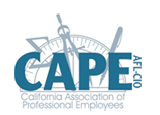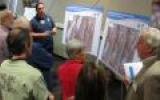No Correlation between Pension Costs and Government Deficits
There is an argument posed by many in the popular media, by Republicans in the state Senate and Assembly, and by self-appointed pension reform gadflies. All of them have tremendous newfound celebrity attached to their allegations, but how much of it is true? And does any of it apply to us in Los Angeles County.
The answers are none, and no.
The argument posed by anti-public employee interests feeds into the fears and frustrations of California’s taxpayers, especially those who are hurting financially because of layoffs in their households. Pointing at public employees’ pay and benefits, our critics have sold the idea that teachers, nurses, firefighters and all public employees are to blame for the state’s and local governments’ financial woes.
Ten years ago, a booming stock market and growing state and local tax revenues prevented the anti-public employee arguments from gaining traction. People entering the job market found good-paying jobs in the private sector, and losing your job didn’t mean losing your house.
All that has changed, and the gadflies making the fallacious arguments about public employees have taken front and center coverage in the press.
The truth is that the state’s tax system magnifies the problems of boom and bust cycles. In the years since Governor Gray Davis’ administration, California’s budget increased by more than a third, and has now decreased by roughly the same amount. The increase in the number of state workers drove the costs up, and wage and benefit compromises have brought the number back down. The state’s obligation to CalPERS is reportedly only 4% of the state’s annual budget.
In Los Angeles County, we never had the sharp budget increases, and — although many departments are cutting back — we’ve not suffered the deficits that would necessitate a sharp decline in County services.
The point that completely refutes our gadfly-critics’ argument relates to how wealthy individuals and large corporations are taxed in California. Of course, there are huge tax loopholes and more are created for the proprietary interests each year. But the real culprit at the state level is the heavy reliance on income and capital gains tax for the state’s revenues. California’s tax revenues exaggerate boom and bust cycles, and our state’s leaders have dealt with it poorly.
That’s how you get a state budget of roughly $115 billion in 2007-08 reduced to a current 2011-12 proposal of roughly $84 billion.
While we’re on the numbers, a $20 billion decrease in the state’s resources because of falling tax revenues highlights the real problem. When compared to the state’s total state cost this year for contributions to CalPERS and CalSTRS of roughly $4 billion, it’s obvious where the real problem lies.
The anti-public employee gadflies spout off about the “unsustainability” of public employee pensions, but the truth is that our state’s tax system is what’s unsustainable.
Again, none of those problems exist at the local level in Los Angeles County; not the deficits, not the cycles, and certainly not the alleged high costs of public employee pensions. In fact, recent reports from LACERA indicate the County’s retirement fund was 83% funded at the close of last fiscal year on June 30, 2010. And more importantly, the fund has grown by more than 15% in the first half of the current fiscal year.
There is nothing that needs to be fixed at LACERA, and what should be fixed at the state level is the tax system.
Contrary to what you hear from the media and the pension reform gadflies, changing our state’s tax system to eliminate the boom-bust exaggerations and proprietary loopholes for wealthy individuals and corporations would fix the real problems.
[CAPE Members: Please share this website with non-members at your work location]
©CAPE [Terms of Use]














